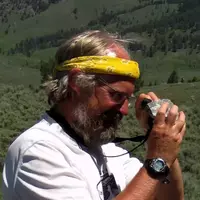Addressing Mineral Resource Needs for Society
published Mar 31, 2017 3:45pmMining in America invokes passions pro and con. An embedded research project in a Mineralogy course provides students with first-hand experience to engage exploration, development and remediation of mineral resource deposits as a possible career path, and hosting mineral companies get access to state-of-the-art research results that can be used to inform their project operations. This instructional activity addresses national needs to develop mineral resources to sustain our economic health and national security, and to develop the workforce needed to support the mineral industries from discovery to environmental remediation.
The United States is facing crises with respect to mineral resources on two fronts: 1) the dependence of the security and economic health of the United States on critical and strategic mineral resources required to sustain our quality of life (NRC, 2008; see also USGS Mineral Commodity Summaries, 2015), and 2) the need to train the future workforce that is prepared to work in the area of mineral resources, including exploration, development, mining, ore processing and environmental remediation of mineral resource deposits (NRC, 2013). Modern technologies demand use of resources from virtually the entire periodic table, most of which are exceedingly rare in nature, are not currently mined in deposits developed in the US, and are imported from countries that may be politically unstable or may not be particularly friendly to the interests of the U.S. Examples of uses of critical minerals include: solar panels (boron, gallium cadmium, germanium, indium, selenium, tellurium), wind turbines (cobalt, Rare Earth Elements, cadmium, lithium), cell phones (gold, palladium, platinum indium, tantalum, cesium)...you get the picture. With respect to preparation of geoscientists to explore, develop, mine and reclaim mineral resources, the AGI Status of the Workforce (2016) reports that only 4% of Geoscience graduates with a MA/MS degree were hired in the mineral sector (none were reported for BA/BS or PhD; Figure 4.2), even though the median salary in mining and geologic engineering is over $90,000/year (2015; Figure 4.10). Although there is well-founded concern about legacy environmental issues related to mining, the fact is that the quality of life in our modern society is strongly dependent on access to a wide array of mineral resources (see InTeGrate Module on Human's Dependence on Earth's Mineral Resources). We're in a world of hurt in our inattention to development of both the physical and human resources required to support the mineral extraction (and recovery) industries.

These types of embedded research projects in geoscience classes are a win-win-win-win-win proposition: students gain essential experience in authentic research projects that demonstrate the procedures used in our community of practice, and they also gain insights into a potential career pathway (mineral industries) that they may not have previously considered; our lab facilities benefit from expanded use of our instrumentation, as many students choose to continue this work in undergraduate research projects or continuing to graduate school; the institution benefits as we contribute to the central mission of our land grant institution to serve the citizens of our State and contribute to its economic well-being; companies benefit as they receive state-of-the-art results to inform their project development; and the nation benefits as there is an increased awareness about our reliance on mineral resources, and potentially the development of the workforce needed to address these needs.
References:
American Geosciences Institute, Status of the Geoscience Workforce, 2016
(can be ordered at: https://www.americangeosciences.org/workforce/reports
InTeGrate, Human's Dependence on Earth's Mineral Resources;
http://serc.carleton.edu/integrate/teaching_materials/mineral_resources/index.html
National Research Council, 2008, Minerals, Critical Minerals, and the U.S. Economy, National Academy Press
National Research Council, 2013, Emerging Workforce Trends in the U.S. Energy and Mining Industries: A Call to Action, National Academy Press
On the Cutting Edge, Strategies to Involve Undergraduates in Research: Upper Division Courses, Independent Study, and REU's http://serc.carleton.edu/NAGTWorkshops/undergraduate_research/strategies.html
U.S. Geological Survey Mineral Commodity Summaries, 2015
https://minerals.usgs.gov/minerals/pubs/mcs/2015/mcs2015.pdf
Comment? Start the discussion about Addressing Mineral Resource Needs for Society



![[creative commons]](/images/creativecommons_16.png)